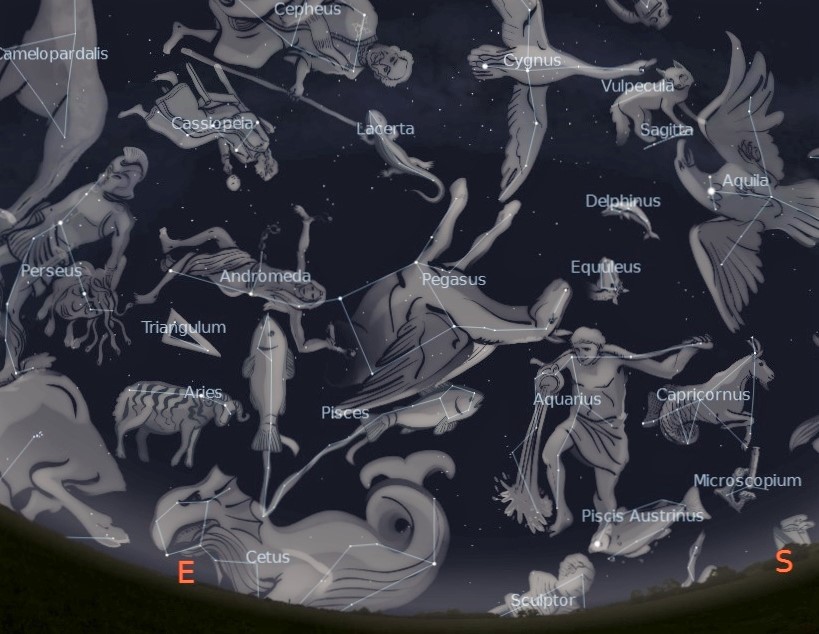This Week’s Sky at a Glance, 2020 September 12 – 19 ~by Curt Nason
This is the time of year when the evening sky seems static; the stars appear to be in the same place night after night in twilight. As you can see below, the Sun sets about two minutes earlier each evening. With reference to the stars, Earth rotates once every 23 hours, 56 minutes and 4 seconds. But since our clocks are based on a 24-hour solar day rather than the sidereal day, the stars rise about 4 minutes earlier each evening. The rate of earlier sunsets this time of year cancels half of that westward movement. Although the stars rise earlier we also see them sooner. That is a bonus because many of the finest objects to observe in a telescope are prominent now, particularly the Milky Way.
The opposite occurs in spring when the later sunsets add to the earlier rising of stars. The constellations seem to fly past over a month or two, much to the chagrin of those who delight in observing the distant galaxies that abound in those constellations. Earth’s motion around the Sun results in many of the constellations being seasonal. For example, we currently see Orion in the southeast before sunrise. Come January it will be there after sunset and stick around in the evening sky until mid-spring. Those constellations near the north are circumpolar, meaning they never set and we see them year round. There are 22 constellations in the southern hemisphere sky that we see no part of at all from New Brunswick.
This Week in the Solar System
Saturday’s sunrise in Moncton is at 6:54 am and sunset will occur at 7:35 pm, giving 13 hours, 41 minutes of daylight (6:59 am and 7:39 pm in Saint John). Next Saturday the Sun will rise at 7:02 am and set at 7:21 pm, giving 12 hours, 19 minutes of daylight (7:08 am and 7:26 pm in Saint John).
The Moon is near Venus on Monday and it is new on Thursday. Jupiter reaches a stationary point this Saturday, beginning a slow dash toward Saturn which will end in a spectacular conjunction at the winter solstice. Both planets are well placed for evening twilight observing. Watch for Jupiter’s moon Io to reappear from the planet’s shadow between 9:10 and 9:15 pm on Wednesday. By midweek Mars will be rising around 9 pm and appearing almost as bright as Jupiter, while Mercury is setting 40 minutes after the Sun. With the new Moon this week, zodiacal light might be visible to the east in a dark morning sky for the rest of the month.
With astronomy meetings and outreach activities on hold, you can watch the local Sunday Night Astronomy Show at 8 pm and view archived shows.
Questions? Contact Curt Nason.

